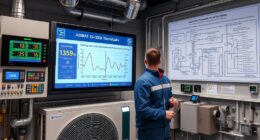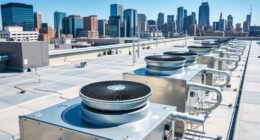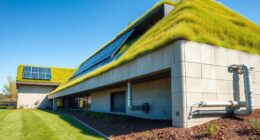We have found effective ways to save energy with heat pumps. By learning about energy efficiency ratings, choosing the correct pump size, adjusting settings, and ensuring proper maintenance, we can reduce energy expenses.
Additionally, supplementing with insulation and weatherization enhances heat pump efficiency.
In this article, we’ll provide concise, technical, and informative tips to help you maximize energy savings with your heat pump.
Let’s dive in and uncover these strategies together.

Key Takeaways
- Understanding the energy efficiency ratings of heat pumps, such as SEER and HSPF, is important for selecting an efficient model.
- Properly sizing a heat pump based on the square footage and climate of the home ensures efficient operation and performance.
- Adjusting thermostat settings and utilizing different operational modes can optimize energy savings with a heat pump.
- Regular maintenance, cleaning, and insulation/weatherization measures are essential for maximizing heat pump efficiency and energy savings.
Understanding Heat Pump Energy Efficiency Ratings
Let’s explore the different energy efficiency ratings that help us understand the performance of heat pumps.
With the advancements in heat pump technology, it has become crucial to compare energy efficiency standards to make informed decisions.
One important rating to consider is the Seasonal Energy Efficiency Ratio (SEER). SEER measures a heat pump’s cooling efficiency over a season. The higher the SEER rating, the more energy-efficient the heat pump is.
Another rating is the Heating Seasonal Performance Factor (HSPF), which measures a heat pump’s heating efficiency. Similar to SEER, a higher HSPF rating indicates better energy efficiency.

Additionally, the Energy Efficiency Ratio (EER) measures a heat pump’s cooling efficiency at a specific temperature.
Selecting the Right Size Heat Pump for Your Home
We should consider both the square footage and the climate of our home when selecting the right size heat pump. Choosing the correct size is crucial for efficient operation and optimal performance.
A heat pump that’s too small may struggle to adequately heat or cool the space, while one that’s too large may cycle on and off frequently, wasting energy and reducing comfort.
Energy efficient heating technology has made significant advancements in recent years, offering homeowners the benefits of lower energy bills and reduced carbon emissions. Installing a properly sized heat pump can provide consistent and reliable heating and cooling, ensuring optimal comfort throughout the year.
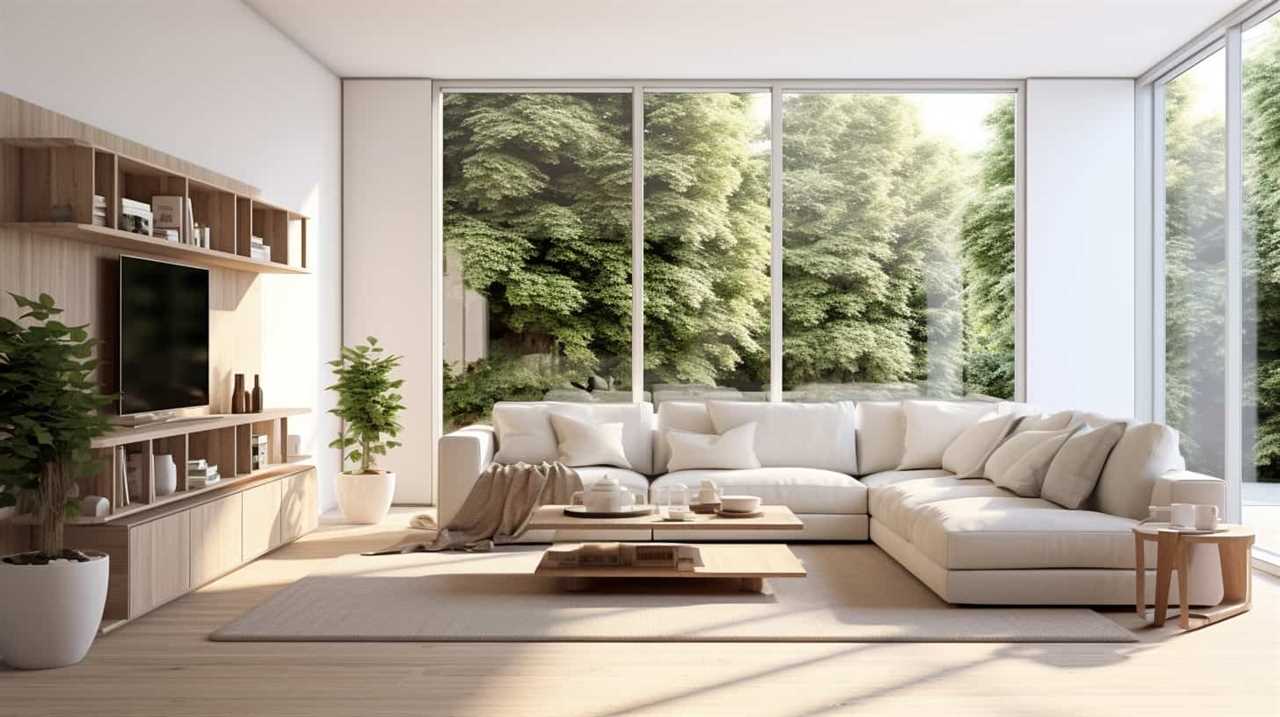
Optimizing Heat Pump Settings for Energy Savings
Our goal is to optimize the settings of our heat pump for energy savings. To achieve this, we need to focus on two key aspects: heat pump thermostat settings and heat pump operational modes.
Firstly, adjusting the thermostat settings can have a significant impact on energy consumption. Lowering the temperature by a few degrees during the winter or raising it during the summer can result in substantial energy savings. It’s recommended to set the thermostat to the highest comfortable temperature in the summer and the lowest comfortable temperature in the winter.
Secondly, understanding and utilizing the different operational modes of the heat pump can also contribute to energy savings. These modes include heating, cooling, and auto. By selecting the appropriate mode based on the current weather conditions and desired indoor temperature, you can optimize the heat pump’s efficiency and reduce energy usage.
Implementing Proper Heat Pump Maintenance and Cleaning
Regularly maintaining and cleaning our heat pump is crucial for optimal efficiency and energy savings. Heat pump troubleshooting can help identify and address common heat pump problems.
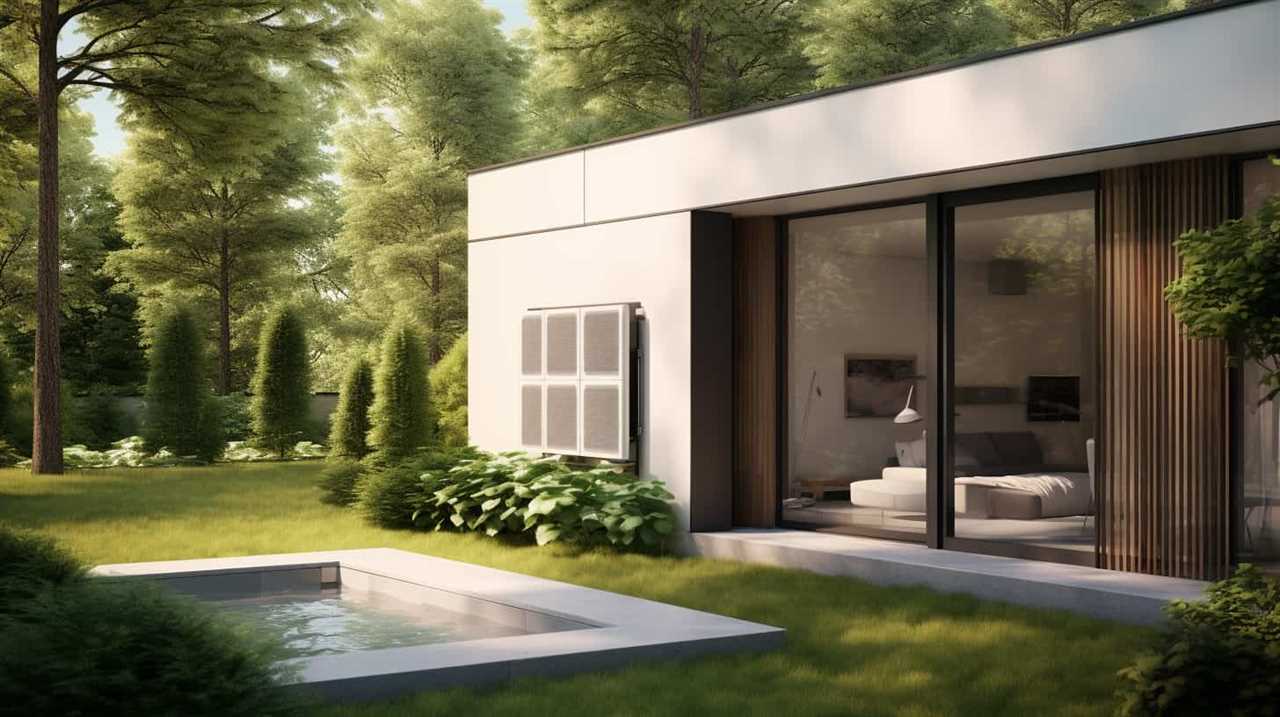
One common issue is reduced airflow, which can be caused by a dirty or clogged air filter. Regularly cleaning or replacing the air filter can help improve performance.
Another problem is refrigerant leaks, which can lead to decreased cooling or heating capacity. A professional technician should be called to fix leaks and recharge the system.
Additionally, regular inspection and cleaning of outdoor coils can prevent dirt and debris buildup, ensuring proper heat transfer. It’s also important to check for loose electrical connections, as they can cause inefficiency or system failure.
Supplementing Heat Pump Efficiency With Insulation and Weatherization
To improve heat pump efficiency, we can supplement it with insulation and weatherization.

Insulation is an essential component in enhancing the performance of a heat pump system. It helps to minimize heat loss during the winter and prevents heat gain during the summer, allowing the heat pump to operate more efficiently. Insulation benefits include reducing energy consumption, maintaining a consistent indoor temperature, and lowering utility bills.
Weatherization techniques also play a crucial role in maximizing heat pump efficiency. By sealing air leaks and insulating windows and doors, weatherization helps to prevent drafts and temperature fluctuations. This ensures that the heat pump doesn’t have to work as hard to maintain the desired temperature, saving energy and reducing wear and tear on the system.
Incorporating insulation and weatherization techniques is a cost-effective way to improve heat pump efficiency and maximize energy savings.
Frequently Asked Questions
What Is the Average Lifespan of a Heat Pump and When Should It Be Replaced?
The average lifespan of a heat pump is around 15-20 years. Signs of replacement include frequent breakdowns, high energy bills, and decreased performance. It’s important to consider replacing the heat pump before it becomes inefficient.
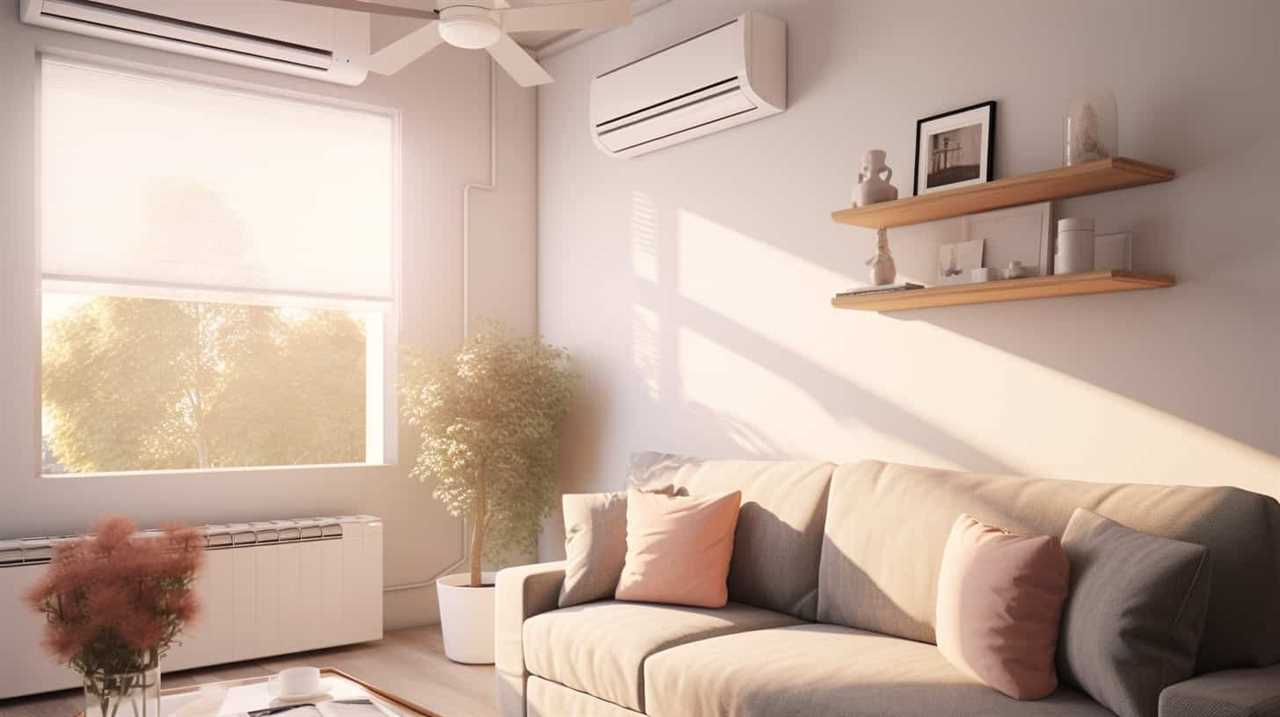
Can a Heat Pump Be Used as the Sole Heating Source for a Home in Extremely Cold Climates?
Yes, a heat pump can be used as the sole heating source for a home in extremely cold climates. Although it may face challenges, such as defrosting and running less efficiently, the benefits include energy savings and choosing the right size for your home.
Are There Any Government Incentives or Rebates Available for Installing a Heat Pump?
Yes, there are government incentives and heat pump rebates available for installation. These programs provide financial incentives to encourage the use of energy-efficient heat pumps, making it more affordable for homeowners to make the switch.
How Much Noise Does a Heat Pump Typically Make When It Is Running?
Heat pump noise levels can vary, but there are ways to reduce it. Regular maintenance, such as cleaning the outdoor unit, can help. Installing a sound barrier or locating the unit away from living areas can also minimize noise.
Is It Necessary to Hire a Professional for Heat Pump Maintenance and Cleaning, or Can It Be Done as a DIY Project?
It’s important to weigh the benefits and risks of DIY heat pump maintenance versus hiring a professional. While DIY may save money, professional maintenance ensures proper cleaning and troubleshooting, potentially preventing costly repairs.

Conclusion
By understanding heat pump energy efficiency ratings, selecting the right size heat pump, optimizing settings, and implementing proper maintenance and insulation, we can save significant energy and costs.
Just like a well-tuned orchestra, every component of our heat pump system must work in harmony to achieve maximum efficiency. Neglecting even one element can disrupt the symphony and result in wasted energy.
Let’s take charge of our heat pumps and orchestrate a more sustainable future.






